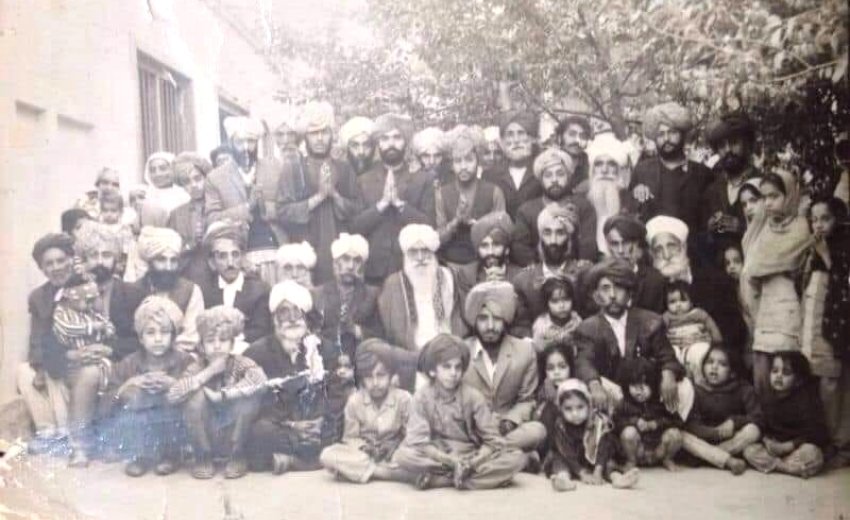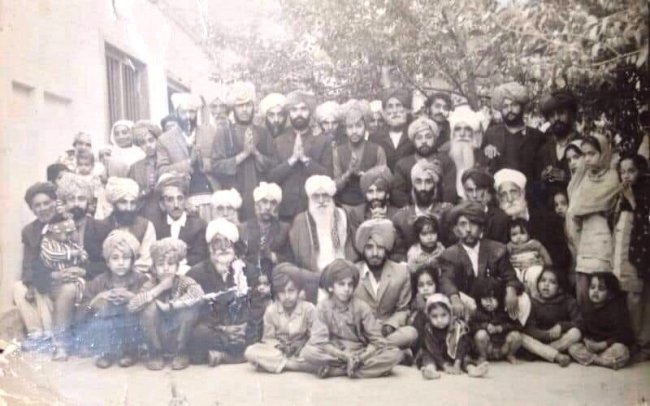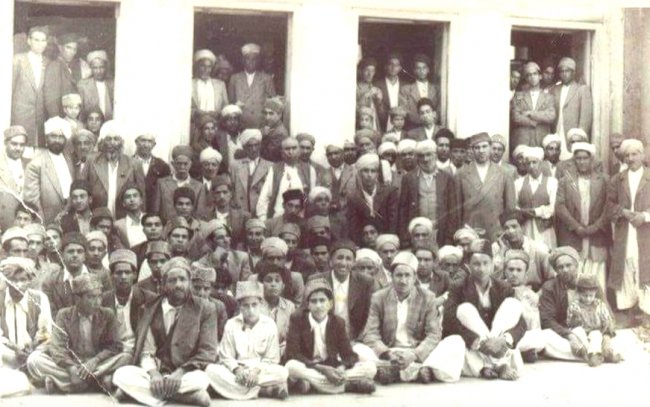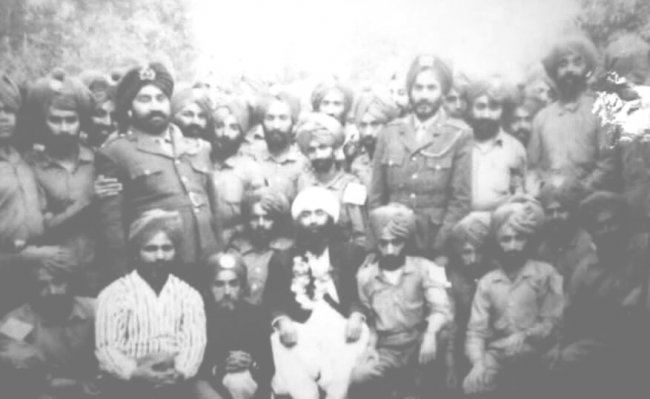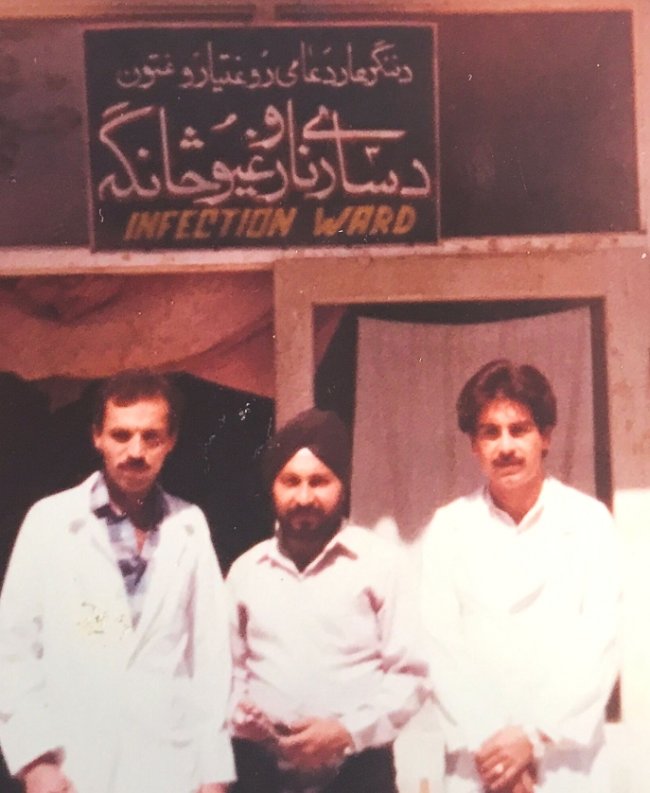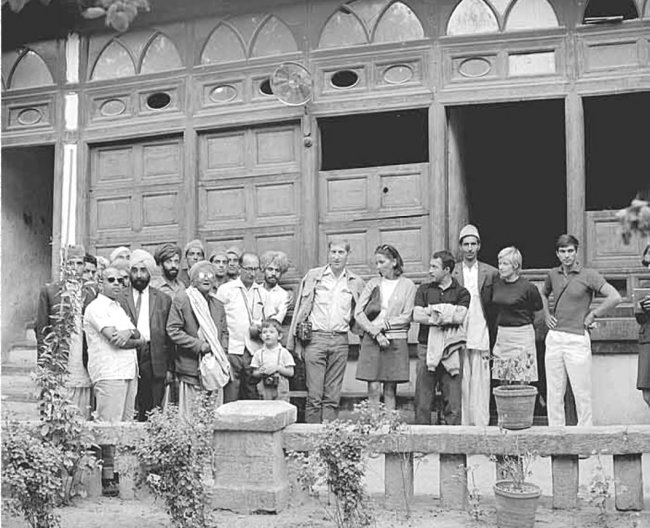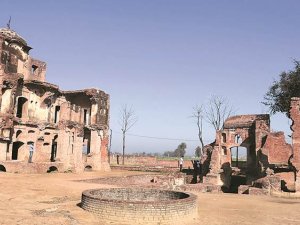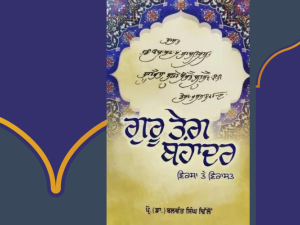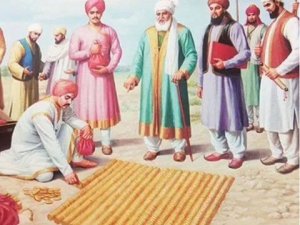About the Author
Dr Joginder Singh Tej Khurana completed his medical degree in 1980 from Kabul/Nangahar University and worked as a physician and lecturer of medical science at Nangarhar Medical College, Jalalabad. He was a member of the Afghan Grand Assembly (Loya Jirga) from 1990-to 92 and an official representative of the Afghan Sikh and Hindu community at the Governor (Waali) House Council in Nangarhar province from 1985 onwards. He was awarded a gold medal for promoting peace and harmony in 1989 by President Dr Najibullah.
He held several important posts and was part of the Central Committee of Khalsa Diwan Afghanistan, a leading Sikh organization in Afghanistan (discussed in detail later). In 2001 Dr Khurana migrated to the UK and continued to be at the forefront of voluntary and community development work. He was one of the founding fathers of Charity Khalsa Diwan Afghanistan UK.
Dr Khurana age 70 now lives in London and has been working on writing the history of Afghan Sikhs and Hindus for the past 10 years. Bhulian Vesrian Yaddan De Charokhe (A peek into the fading memories) is based on historical research, Dr Khurana's own experiences and verbal traditions told by his father, a prominent personality in Nangarhar province, is a magnum opus, running into 2500 page over 7 volumes. A large part of the voluminous work has information that is not easily obtainable and some of it is not available at all. Hence this is a landmark in documenting the history, heritage, culture, and the legacy of Afghan Hindus and Sikhs. In this write -up I will try to review the first two volumes of this Punjabi book.
Volume 1
The 308 page book is 25cm X 18 cm (or approximately 10' X 7.5') hardbound. Throughout the book, there is a generous number of photographs in black and white which enhances the reading experience. The last 8 pages have coloured photographs on art paper. The back of the book has the historic photograph of the Anglo-Afghan conference at Dehradun in 1920 where the independence of Afghanistan was discussed and agreed upon. On the extreme left, the gentleman in spectacles with moustache, beard, and a small turban was Diwan Niranjan Das, the Hindu Commerce Minister of Amir of Afghanistan. The photo below is of the Afghan Hindus and Sikhs who joined the celebrations to commemorate the independence of the country in 1922.
The book has 13 chapters on various topics. The country was known as Asvaka, Aryana, then Khurasan, and finally Afghanistan during various periods in history. The pre-Islamic history of the country is shrouded in some mystery due to the lack of documented history. The book provides details of faiths that inhabited before Islam namely Hinduism, Zoroastrianism, and Buddhism among others. The major cities in 34 provinces, tourist spots, rivers, dams, and mountains are explained.
There is a lot of interesting information on the national animal, birds, sports, trees, flowers, the dance of Afghanistan, and the first-ever photograph of an Afghan lady taken in 1880 has been shared. A chapter is dedicated to Communication, the introduction of radio, then television, cinema, the Miss Afghanistan beauty contest, which was televised in 1973, Ahmad Zahir, the Afghan Elvis who died (some say killed) in 1979 at the age of 33 years. The Afghanistan hockey team came 6th in the 1936 Olympics. The recent performances in cricket by Afghanistan national team have been discussed.
The author writes an intriguing verbal tradition where a Hindu Astrologer (from India) was tested by Mahmud Ghaznavi (r. 998-1030) and the former proved his mettle which led to an agreement where Hindus were allowed to live in Afghanistan as dhimmis with some restrictions and payment of Jizya. Although Afghan historians have rejected it, it is not a straightforward deduction. The test given by Mahmud is similar to the one which he gave to Alberuni who has recorded it in his famous book, Tarikh e Hind. There are contemporary sources that state that Hindus served in the court of Ghazni and the army. The history of the city of Ghazni and the status of Hindus and Sikhs (including Bhai Nand Lal and his father) in it has been covered in detail. The city of Ghazni was destroyed and the family of the last Ghaznavi ruler was killed by Ghurids who replaced them as the ruling dynasty.
The religions and faiths of the people of pre-Islamic Afghanistan have been examined. The book also delves into the ancient Hindu temples, Buddhist stupas, and archeological finds of the 20th century. The Shiva Lingam, idols of deities namely Lord Shiva, Ganesh, Surya, and Shakti goddess have been unearthed. Until very recently the Nath Yogi (who were Shaivite) Temples were operational in Kabul, Jalalabad, and Ghazni.
Volume 2
This is a bigger volume and consists of 438 pages. The cover of the book has the historic photograph of Loya Jirga (Grand Assembly) of April 1920 organized by the new ruler, King Amanullah Khan who ruled the country till 1929 and brought many progressive laws which included outlawing slavery. The 700 Hindu slaves in Kabul became free and Hindus-Sikhs of Afghanistan gained rights to become almost equal citizens of the country. The Maulvis objected to it on the grounds of Sharia, but the enlightened Badshah overruled them because humanity must prevail over everything.
The back of this volume has the photograph of Gur Asthan Sri Chasma Sahib at Sultanpur near Jalalabad who visited Guru Nanak Dev Ji. The second photo is of the accommodation tents for the Sangat, and the dispensary/clinic established during the Samagam at the above site during the Gurpurab of Guru Nanak Sahib in 1970. This volume deals with the travels of Guru Nanak comprehensively. The author has used Janamsakhis, Giani Gian Singh’s Twarikh Guru Khalsa, and Pandit Arjun Muni's account to explain the visit and legacy of Guru Saab's visit.
The Sangat of Kabul province of Mughal India visited Punjab during the Guruship of all succeeding nine Gurus. The hukamnama of Guru Gobind Singh Ji written for Kabul Sangat duly notes 5Ks, rejects Kutha meat and tobacco, and advises to avoid the company of Minas, Masands, Ram Rayias, and those who kill their daughters. Needless to say, this hukamnama is revered by all Afghan Sikhs and the author informs that this formed the basis of Sikh Rehat Maryada which was agreed upon and approved in 1941.
Akali Kaur Singh (1886-1953), the great Sikh scholar and preacher, traveled to Afghanistan 8 times from 1918 to 1931. The first six visits took place in quick succession between 1918 to 1922 which led to the first Amrit Sanchar in Afghanistan and the formation of Khalsa Diwan Afghanistan, a leading charity organization that worked for the welfare and promotion of Sikhi in 1921. A major part of this volume covers the contribution of Khalsa Diwan Afghanistan till 1993. The author has used the records of the charity and articles written by his late brother-in-law, Dr Raghbir Singh Bir.
Although King Amanullah Khan (1919-29) was an enlightened and secular individual, his pace of change caused people to rebel against him. He banned turbans and burkas and men were told to wear hats instead of turbans. This caused many problems for Sikhs and the ban on the burka led to wide-scale rebellion against him. Amanullah left the country in 1929 never to return and died in Europe in 1960.
Zahir Shah ascended the throne of Afghanistan in 1933, as a 19-year-old lad. Till 1953, the power was vested with the Prime Ministers who were his paternal uncles namely Mohd Hashim Khan and Shah Mahmud Khan. The former served until 1946 and the latter succeeded him and held the post of Prime Minister till 1953. These two Prime Ministers brought back several anti-minorities measures which were part of Amir Habibullah Khan's regime (1901-19). However, during this period (in 1936) Khalsa Diwan was able to establish Punjabi schools within many Gurdwara Sahibs in Nangahar and neighboring provinces.
In between, India became independent, and a few thousand Sikhs and Hindus from the Frontier province of newly created Pakistan crossed over to Afghanistan to escape certain death. This also led to the problem of Sikhs from India coming to Afghanistan by land. Sadly, due to negligence and oversight of Kabuli Sikhs, the land of Gurdwara Guru Nanak in Kabul was lost. In the modernization and road widening exercise the above Gurdwara Sahib was demolished but Sikhs had the option to buy the land next to it, but they did not raise the money and declined to get any help from Khalsa Diwan Afghanistan.
In 1951 the celebrated Sikh historian Ganda Singh visited Afghanistan in search of material on Ahmad Shah which was his Doctorate thesis and was published as a book in 1959. This is still considered one of the most authoritative accounts of Abdali who is fondly remembered as Ahmad Shah Baba by Afghans. Professor Ganda Singh's travelogue written in Punjabi is the only account of Sikhs and Hindus of that period. He mentioned the episode regarding Gurdwara Guru Nanak in his famous book, Afghanistan da Safar.
Shah Mahmud Khan was replaced by Mohd Daoud Khan, a cousin of Zahir Shah who remained the Prime Minister for 10 years till 1963. This was the beginning of several reforms and modernisation of Afghanistan and its society which benefited the Sikhs and Hindus as well. Around 1954-55, the Sikhs and the Hindus were given Tazkira, the national identity card akin to citizenship. The Jizya tax imposed on them earlier was removed, and they were officially allowed to serve in the Afghan National Army. Military service of two years was made compulsory for every Afghan male from the age of 22. For those who were postgraduates, the compulsory service was only one year.
In 1954, the local government (Nangarhar province) decided to widen the road and Gurdwara Guru Nanak Darbar at Jalalabad came under that modernization plan. This meant that the Gurdwara had to be demolished and the local government would give land [for the gurdwara] elsewhere. When the Sikhs failed to convince the local authorities not to demolish the gurdwara, a petition was made to Emperor Zahir Shah in Kabul who issued a royal edict and the Gurdwara was handed back to the Sikhs. The road widening plan was changed. This incident has been discussed in much detail which caused a rare discord between Sikh and Hindu youngsters.
In the early 1970s, after completing military service, every postgraduate was granted permission to wear a military uniform on some special occasions. The Afghan Sikhs would wear it very proudly, especially on Vaisakhi Nagar Keertan (Sikh religious procession). By the late 1970s, every hospital in major Afghan cities had its fair share of Sikh and Hindu doctors. Their old and existing places of worship were repaired, rebuilt, and renovated. In the mid-1960s, the Gurdwara Guru Singh Sabha in the Karte Parwan area of Kabul was built which became the hub for the Sikh activities in Kabul. The Sikhs and Hindus were one of the richest groups in Afghanistan and yet very much part and parcel of Afghan society.
In 1965, the Sikh youth formed Naujawan Sikh Sabha for their social and religious requirements. The members and organisers of these bodies were doctors and educated members of the community. They went with a mission to eradicate illiteracy and went to every house to encourage the community to study. They spoke in Gurdwaras and Mandirs on embracing modern education. In 1968, the Afghan Sikh Sabha was formed. It worked on gaining higher education and doing away with outdated social practices. There is a large number of hidden gems in the book which all cannot be disclosed in a short review.
Dr Khurana beautifully takes us through this period and the write-up includes biographies of important Afghan Sikhs who lead Khalsa Diwan Afghanistan and played an important part in Afghan society. Dr Saab had done a yeoman service by writing these books. I hope the younger Afghan Sikh and Hindu generations will utilize them to further research and obtain doctorates on their rich history and legacy. These books are for both casual and serious readers on the history of Sikhs and Hindus in Afghanistan. The books are available with Khalsa Diwan Welfare Society, Khalsa Diwan Bhawan, S-2/22 Old Mahavir Nagar, Tilak Nagar, New Delhi -18. Readers can contact Sardar Narinder Singh Nagpal to procure these books.
Note: The writer of this article is the author of the book, 'Afghan Hindus & Sikhs History of a Thousand Years'

